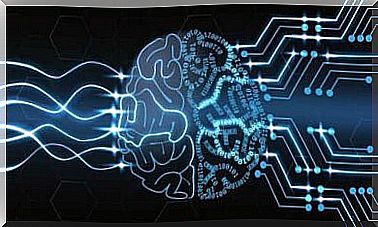Nancy Andreasen And Her Research On Schizophrenia

dr. Nancy Andreasen is a psychologist from the United States. She is currently Andrew H. Woods Chair of Psychiatry and Director of its Neuroimaging Research Center and Mental Health Clinical Center at the University of Iowa Carver College of Medicine.
While you may not have heard of her, Dr. Nancy Andreasen a renowned researcher who has made significant contributions to schizophrenia research. However, she has not always been involved in medicine.
dr. Andreasen actually received her degree in English literature, with a specialization in Renaissance literature. Initially she also worked as a professor in that field, until her life took an unexpected turn. After the birth of her first daughter, Andreasen had some serious health problems that inspired her to study medicine.
However, her research is not limited to psychiatry. Andreasen also studies creativity, spirituality, neuroimaging, genomics, natural history and the neural mechanisms of schizophrenia. Keep reading to find out all the scientific contributions this woman has made.

Nancy Andreasen’s ‘Firsts’
dr. Nancy Andreasen is a pioneer in many ways. Her career has been marked by a series of important ‘firsts’:
- She conducted the first quantitative MRI study on schizophrenia.
- She developed the first scales for measuring the positive and negative symptoms of schizophrenia.
- dr. Andreasen also conducted the first modern empirical study of creativity, examining factors such as family, environmental cognition, and their relationship to mental illness.
- Finally, she also conducted the first study combining genomic and neuroimaging techniques.
dr. Andreasen has also contributed to psychiatric diagnosis in the DSM-III and DSM-IV task groups. In fact, she was personally responsible for building the foundation for stress disorder research with her definition of post-traumatic stress disorder (PTSD) for the DSM-III.
Andreasen was also the president of the American Psychopathological Association and the Psychiatric Research Society. She is currently a member of the Institute of Medicine of the National Academy of Sciences and the American Academy of Arts and Sciences.
Research into schizophrenia
dr. Andreasen is a leading expert on schizophrenia. She has therefore conducted numerous studies. She has also contributed to the understanding of the mechanisms and treatment of this disease.
Schizophrenia is one of the biggest public health problems we face today. It affects 1% of the population.
In fact, according to the World Health Organization, it ranks ninth in the category of medical diseases in terms of the global burden of disease. It is even above cancer, AIDS, heart disease, diabetes and other major diseases.
However, the signs and symptoms of schizophrenia are very diverse. They include disturbances in perception (ie, hallucinations), inferential thinking (ie, delusions), disorganized thinking, and extremely disorganized or abnormal motor behavior. None of the signs and symptoms of schizophrenia are pathognomonic (specific to that disease).
This means that none of the patients suffer from all the symptoms. As a result, schizophrenia differs from other mental illnesses that generally affect only one brain system. Some examples include Alzheimer’s disease, which affects memory, and bipolar disorder, which affects mood.
The reconceptualization of schizophrenia
dr. Nancy Andreasen’s modern reconceptualization of schizophrenia divides the symptoms into two categories: positive and negative.
She defines positive symptoms as an exaggeration of normal functions (the presence of something that should be absent) and negative symptoms as the loss of normal functions (the absence of something that should be present).
- Positive symptoms include delusions, hallucinations, disorganized speech, and disorganized behavior.
- Negative symptoms include poor speech and thought, loss of motivation, anhedonia, apathy, and emotional numbness.
Within neuroscience, schizophrenia is a disease that affects distributed neural circuits rather than individual cells or individual regions. Most people with schizophrenia have a subjective sense that their ability to think and feel is somehow disorganized or broken.
Neuroimaging has enabled scientists to study how the brains of people with schizophrenia work differently.
Studies in this area show that the subjective ‘disconnected’ or disorganized’ experiences reflect a problem in the ability of distributed brain regions to send messages back and forth in an efficient and precise way.
The etymology of the word schizophrenia is therefore a perfect description of the disease. It literally means “fragmented or disconnected mind.” That’s exactly what scientists have seen through neuroimaging.

A life dedicated to research
To this day , Dr. Andreasen is continuing her research on schizophrenia to increase the general knowledge of this disease so that we can improve its treatment.
She works on structural and functional studies through neuroimaging, longitudinal course and outcome studies, and studies investigating and integrating genetic and genomic factors with neuroimaging.
dr. Nancy Andreasen is therefore without doubt a key figure in the field of psychiatry and schizophrenia.









